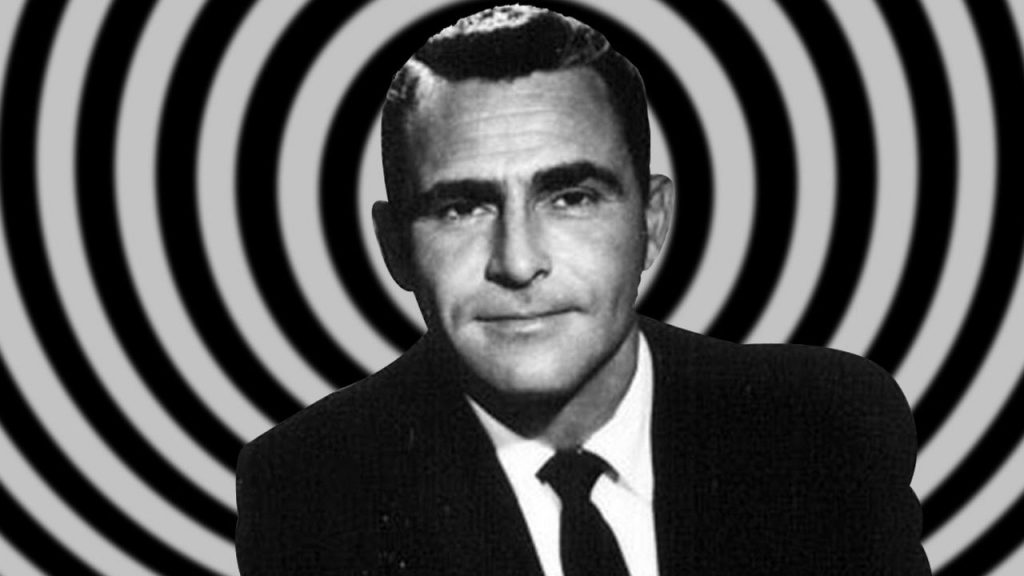
Halloween spirit is cultivated by telling haunted ghost tales, recollecting old crimes and sharing horror stories. In the city of Binghamton, finding inspiration is simple, thanks to Binghamton native Rod Serling’s original series “The Twilight Zone.”
“The Twilight Zone” is a U.S. sci-fi anthology series from the 1950s and ’60s. Appearing in black and white, the episodes are allegorical and feature alternate universes, unexpected creatures and stories of psychological horror and suspense.
Having spent his childhood in the area, Serling used Binghamton as a setting and for essential plot points throughout the series. Pipe Dream has compiled a list of episodes with connections to our beloved city.
“Walking Distance”
It is 1959. Advertising executive Martin Sloan, 36, returns to visit the town where he grew up, called Homewood. Driving through the neighborhood, he notices the town hasn’t changed since he was a boy. He visits the local drugstore and discovers the year is 1936.
He returns to his childhood playground and sees the carousel he played on as a boy. This is inspired by the George F. Johnson Recreation Park Carousel located at 103 Laurel Ave. in the city of Binghamton.
He sees the younger version of himself and startles young Martin in an attempt to explain who he is. He’s confronted by his father and older Martin tells him who he is and shows documents to prove it. His father then advises Martin to move on from his childhood and to look ahead to the future.
As they usually do, the episode ends with a provocative monologue from Serling himself.
“Martin Sloan, age 36, vice president in charge of media. Successful in most things but not in the one effort that all men try at some time in their lives — trying to go home again,” he says. “And perhaps across his mind there’ll flit a little errant wish, that a man might not have to become old, never outgrow the parks and the merry-go-rounds of his youth.”
“The Monsters are Due on Maple Street”
Maple Street appears as a typical neighborhood with playing children and gossiping adults. Paul Juser, contributor for Atlas Obscura, a travel publication, speculates that the neighborhood resembles the West Side of Binghamton.
One summer day, there is a flash of light in the sky and residents discover the power of their cars, phones, lights and appliances have gone off. Tommy, a young boy, tells his neighbors that he’s read about this scenario before in connection with an alien invasion. He warns them that the monsters causing this do not want anyone to leave.
The paranoia sets in and the neighbors begin to panic and accuse each other of being the aliens responsible. Anger and fighting ensue and the scene cuts to a hill with an alien ship. The crew laughs at the easily manipulated humans who have made enemies of one another.
Serling again ends with a message to get his audience thinking.
“The tools of conquest do not necessarily come with bombs and explosions and fallout,” Serling said. “There are weapons that are simply thoughts, attitudes, prejudices — to be found only in the minds of men.”
“Mirror Image”
Millicent Barnes is waiting for her bus to Cortland in a bus depot, believed to be inspired by the Greater Binghamton Transportation Center in Downtown Binghamton, when she notices her bus is late and asks the ticket agent when it will arrive. He complains that she has already asked three times. She sees a bag similar to hers in the luggage pile behind him and then realizes her bag is gone.
Adding to her confusion, when Barnes goes to the restroom, the cleaning lady also tells her it’s her second time there. As she’s leaving the bathroom, she glances in the mirror and sees what appears to be herself seated outside on a bench.
Overwhelmed by her experiences, Barnes faints while boarding the bus. A kind traveler, Paul Grinstead, is concerned with what he sees as Barnes’ mental breakdown and calls the police. Once the police take Barnes away, Grinstead sees that his bag is missing and that a man is running out of the station. He tries to chase the man down, but quickly realizes he is chasing himself.
If you’re interested in learning more about Rod Serling and his connection to Binghamton, the Bundy Museum of History and Art has a Rod Serling Archive Exhibition. Located at 129 Main St. on the West Side, the museum houses memorabilia from the show and personal items that belonged to Serling. They also feature deleted scenes and a quiz to test your knowledge of “The Twilight Zone.”


